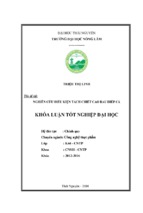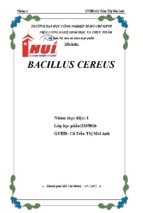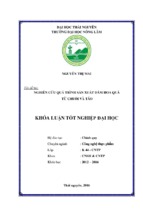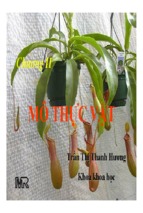Khalid Rehman Hakeem
Mohd Sayeed Akhtar
Siti Nor Akmar Abdullah Editors
Plant,
Soil and
Microbes
Volume 1: Implications in Crop Science
Plant, Soil and Microbes
Khalid Rehman Hakeem
Mohd Sayeed Akhtar • Siti Nor Akmar Abdullah
Editors
Plant, Soil and Microbes
Volume 1: Implications in Crop Science
Editors
Khalid Rehman Hakeem
Faculty of Forestry
Universiti Putra Malaysia
Selangor, Malaysia
Mohd Sayeed Akhtar
Institute of Tropical Agriculture
Universiti Putra Malaysia
Selangor, Malaysia
Siti Nor Akmar Abdullah
Institute of Tropical Agriculture
Universiti Putra Malaysia
Selangor, Malaysia
ISBN 978-3-319-27453-9
ISBN 978-3-319-27455-3
DOI 10.1007/978-3-319-27455-3
(eBook)
Library of Congress Control Number: 2016930561
Springer Cham Heidelberg New York Dordrecht London
© Springer International Publishing Switzerland 2016
This work is subject to copyright. All rights are reserved by the Publisher, whether the whole or part of
the material is concerned, specifically the rights of translation, reprinting, reuse of illustrations, recitation,
broadcasting, reproduction on microfilms or in any other physical way, and transmission or information
storage and retrieval, electronic adaptation, computer software, or by similar or dissimilar methodology
now known or hereafter developed.
The use of general descriptive names, registered names, trademarks, service marks, etc. in this publication
does not imply, even in the absence of a specific statement, that such names are exempt from the relevant
protective laws and regulations and therefore free for general use.
The publisher, the authors and the editors are safe to assume that the advice and information in this book
are believed to be true and accurate at the date of publication. Neither the publisher nor the authors or the
editors give a warranty, express or implied, with respect to the material contained herein or for any errors
or omissions that may have been made.
Printed on acid-free paper
Springer International Publishing AG Switzerland is part of Springer Science+Business Media
(www.springer.com)
Foreword
The flowering plants were said to have originated approximately 125 million years
ago. All through the past centuries, the number of species and diversity increased
steadily. Currently they outnumber other plant groups, because more than 250,000
species of flowering plants have been described. Every year a large number of new
species are added, because we are passing through an “age of angiosperms.” Their
influence on the evolution of animals has been profound, and domestication is now
accepted as the main factor responsible for the rise of human civilizations nearly
10,000 years ago. They are regarded as indispensable for the survival of living
beings in general. All humans on our planet earth depend on crop species like wheat,
rice, maize, and a few others for their survival. They also provide us with vegetables, fruits, oils, fibers, spices, drugs, and fodder, in addition to other uses, and are
therefore of great importance. Their importance to humans is responsible for the
great past and present interest in studying the plant world.
Keeping in view that global population has crossed the level of 6.5 billion, a
major part of it being underfed or undernourished, it is of prime importance to
improve the crop plants using eco-friendly and sustainable approaches. The demographic developments make it clear that improving human nutrition throughout the
world must involve efficient crop production. Efforts to improve crop productivity
mainly rely on the soils.
The soils are influenced by parent materials, organic matter content, pH, texture,
age, drainage, vegetation, and microbial, anthropogenic, and natural processes
involving the amounts of nutrients. The latter are relatively high in soils on a global
basis, but their deficiencies are frequently reported in several crops all over the
world due to increase in nutrient demands from intensive cropping practices and
adaptation of high-yielding cultivars with high nutrient demands; production of
crops on marginal soils low in nutrients; the use of high amounts of fertilizers with
low nutrients; decrease in the use of animal dung, composts, and crop residues; and
finally involvement of natural and anthropogenic factors limiting adequate plant
availability and breaking nutrient balance. Nearly four billion ha of the earth’s icefree land is subject to mineral stresses for plants. The increased crop yields, loss of
nutrients through different ways, liming and misuse of manures, and the use of
v
vi
Foreword
chemical fertilizers with high purity are leading to an accelerated loss of available
soil nutrients. The uptake of nutrients is a process controlled by soil, plant, microbial, and environmental factors. Plant factors such as root and root hair morphology
(length, density, surface area), root-induced changes, root exudation of organic
acids, sugars, nonproteinogenic amino acids, secretion of enzymes, plant demand,
plant species/cultivars, and microbial associations also have an impact on plant
growth and development on the soil.
In addition to the facts cited above, the microbial populations in the soil improve
growth by enhancing atmospheric nitrogen fixation, producing phytohormones,
enhancing root surface areas to facilitate uptake of nutrients, as well as mobilizing
and solubilizing unavailable organic and inorganic nutrients. Many microorganisms
produce siderophores which strongly and specifically bind nutritional elements. The
microorganisms in the rhizosphere are associated with differences among cultivars
in their effectiveness to grow with low mineral levels. A mycorrhizal colonization
of roots increases root surface areas to enhance root exploration of large soil volumes compared to uninfected roots and increase nutrient uptake and tolerance in
plants, toxics, and drought. Mycorrhizal associations particularly increase acquisition of some nutrients in the plants grown under deficiency conditions and decrease
uptake of others which are in excessive amounts. They also undertake the biological
control of root pathogens and in nutrient cycling. Microbial interactions may also
influence nutrient mobility. Several microbes involved in redox reactions in soil
have been identified. Noninfecting rhizosphere microorganisms do enhance plant
nutrition by improving growth and morphology of roots, physiology and development of plants, and nutrient uptake processes by roots.
Plant, Soil and Microbes: Implications in Crop Science, with 17 contributions
from Australia, Brazil, Egypt, France, India, Italy, Malaysia, Pakistan, Portugal,
Bangladesh, and Saudi Arabia, contains an inclusive information and latest research
results in understanding the interactions and implications between plant, soil, and
microbes. This information could be useful for researchers, educators, graduate students, and industry persons for understanding and developing crop improvement
strategies. In this edited volume an attempt has been made to highlight the current
status of crop productivity. Emphasis has been laid on different topics related to the
key principles influencing crop improvement together with an elucidation of the
nature of new approaches in improvement. I am sure that a new generation of
researchers will be benefitted much from this book and share the respect for the crop
plants we all live by and concern for the maintenance of diversity.
Izmer, Turkey
Münir Öztürk
Preface
Soil provides an excellent and diverse ecological niche for the rhizospheric microorganisms and seems to be a hotspot for most of the microbial interactions taking
place below ground level. Among the various rhizospheric microorganisms, mycorrhizal fungi, plant growth-promoting bacteria and root nodule bacteria are of prime
importance, because they have the unique ability to interrelate with the soil and host
plant and are also responsible for the assorted underground interactions. These
microorganisms also play a vital role in nutrient uptake, water relation, ecosystem
establishment, and plant diversity and also had an adverse effect on the pathogen in
a diverse range of pathosystems. Besides these functions, microorganisms also
influence the water use efficiency and biological function during plant–soil interactions, directly or indirectly by altering the microbial balance in the rhizosphere and
suppressing the broad spectrum of plant pathogens.
Considering the importance of these ground rhizospheric microorganisms in the
plant disease protection, it came into highlight from research that the combined
application of these microorganisms is more beneficial than the use of a single
agent and provides a better management against the soilborne plant pathogens. The
interaction of these microorganisms also provides an overview about the biological
functions of soil and its interaction with the plant–microbe system, nutrient management, biogeochemical cycling, various water environmental conditions in
response to biotic and abiotic stresses, signaling of molecules during host–pathogen interaction, role of phytohormones against the environmental stresses, and the
major challenges in the formulation of microorganisms for the biocontrol products.
The molecular approach of these microorganisms is also the basis for understanding the mechanism involved in disease suppression by these hidden underground
beneficial microbes.
This volume with 17 Chapters describes the basis of nutrient exchange between
the microorganisms and the host plants, mechanism of disease protection, and
recent molecular techniques involved in understanding these multi-tropic interactions. We hope that the book will be helpful to graduate students, teachers, researchers,
and industry persons, who are interested in soil microbiology, plant pathology,
ecology, environmental sciences, and agronomy.
vii
viii
Preface
We are highly grateful to all our contributors for readily accepting our invitation
for not only sharing their knowledge and research but for venerably integrating their
expertise in dispersed information from diverse fields in composing the chapters
and enduring editorial suggestions to finally produce this venture. We greatly appreciate their commitment. We are also thankful to Prof. Munir Ozturk for his suggestions and writing the foreword for this volume.
We thank the Springer International team for their generous cooperation at every
stage of the book production.
Selangor, Malaysia
Khalid Rehman Hakeem
Mohd Sayeed Akhtar
Siti Nor Akmar Abdullah
Contents
Plant Growth-Promoting Microorganisms:
Interaction with Plants and Soil ...................................................................
Vankayalapati Vijaya Kumar
1
Managing the Soil Mycorrhizal Infectivity to Improve the Agronomic
Efficiency of Key Processes from Natural Ecosystems Integrated
in Agricultural Management Systems ..........................................................
S. Wahbi, H. Sanguin, E. Baudoin, E. Tournier, T. Maghraoui,
Y. Prin, M. Hafidi, and R. Duponnois
17
Plant and Necrotrophic Fungal Pathogen Interaction:
Mechanism and Mode of Action ...................................................................
Siti Nor Akmar Abdullah and Mohd Sayeed Akhtar
29
Nitrogen Fixing Symbiosis in a Sustainable Agriculture ............................
Isabel Videira e Castro, Paula Fareleira, and Eugénio Ferreira
Soil Microbial Community Interactions Under Tillage Systems
in Australia .....................................................................................................
Vivian A. Rincon-Florez, Lilia C. Carvalhais, Yash P. Dang,
and Peer M. Schenk
Sustainable Crop Production System ...........................................................
Sameen Ruqia Imadi, Kanwal Shazadi, Alvina Gul,
and Khalid Rehman Hakeem
Role of Biopesticides in the Management of Nematodes
and Associated Diseases in Horticultural Crops .........................................
Mahendrakar Sreenivasa Rao, Rajappa Umamaheswari,
Khalkho Priti, Rompalli Rajinikanth, Gummala Nuthana Grace,
Manoharan Kamalnath, Pandi Prabu, Rupa Manoj Kumar,
Mysore Keshavan Chaya, and Vidyashree
55
93
103
117
ix
x
Contents
Impact of Drought on Soil and Microbial Diversity
in Different Agroecosystems of the Semiarid Zones ...................................
Seema B. Sharma and Thivakaran A. Gobi
Biofertilizer Use for Sustainable Agricultural Production .........................
Asmat Rashid, Mohmad Ramzan Mir, and Khalid Rehman Hakeem
149
163
Plant Growth-Promoting Rhizobacteria: An Eco-friendly Approach
for Sustainable Agroecosystem .....................................................................
Sohel S. Shaikh, Riyaz Z. Sayyed, and M.S. Reddy
181
Utilization of Biomaterials as Soil Amendments and Crop Protection
Agents in Integrated Nematode Management .............................................
Mohamed S. Khalil
203
Enhanced Nutritional Programme: An Innovative Approach
to Controlling Plant Diseases in the Tropics ................................................
Khairulmazmi Ahmad and Siti Izera Ismail
225
Effects of Pesticides on Environment ...........................................................
Isra Mahmood, Sameen Ruqia Imadi, Kanwal Shazadi,
Alvina Gul, and Khalid Rehman Hakeem
Microbial Composting of Rice Straw for Improved Stability
and Bioefficacy ...............................................................................................
Hossain Kausar, Mohd. Razi Ismail, Halimi Mohd Saud,
Zulkarami Berahim, Sheikh Hasna Habib, Radziah Othman,
and Saikat Hossain Bhuiyan
Soil Bacteria for Polycyclic Aromatic Hydrocarbon (PAH)
Remediation: Application Potentialities and Limitations ..........................
H. Deka and J. Lahkar
Entomopathogenic Nematodes for the Management
of Subterranean Termites ..............................................................................
Md. Aslam Khan, Wasim Ahmad, Bishwajeet Paul, Sangeeta Paul,
Zehra Khan, and Chetana Aggarwal
Foliar Application of Polyamines to Manage Water Stress
for Improved Grain Filling Formation and Yield in Rice Plants ..............
Berahim Zulkarami, Omar Mohd Husni, Mohd Saud Halimi,
Mohd Monjurul Alam Mondal, Ismail Mohd Razi,
and Hossain Kausar
253
271
291
317
353
About the Book
The interactions between the plant, soil, and microbes are very complex in nature and
may be antagonistic, mutualistic, or synergistic, depending upon the types of microorganisms and their association with the plant and soil. The multitrophic tactics are
involved in these types of interactions to nourish the plants in various habitats and
conditions. Understanding the mechanisms of these interactions is highly desired to
utilize the knowledge in such an eco-friendly and sustainable way, which may not
only resolve the upcoming food security issues but also make the environment green
by reducing the chemical inputs. Plant, Soil and Microbes: Implications in Crop
Science provides an inclusive information on the applied, efficient, and determined
efficacy of plant, soil, and microbes. The book reviews the implications of plant,
soil, and microbes for the improvement in crop yield and protection against various
diseases caused by phytopathogens and nutrient deficiencies.
xi
About the Editors
Khalid Rehman Hakeem is working as a fellow researcher at the Faculty of
Forestry, Universiti Putra Malaysia (UPM), Serdang, Selangor, Malaysia, and also
a visiting professor at Fatih University, Istanbul, Turkey. He obtained his M.Sc.
(Environmental Botany) as well as Ph.D. (Botany) from Jamia Hamdard, New
Delhi, India, in 2006 and 2011, respectively. He completed his postdoctorate in the
fields of forest dynamics and biotechnological studies from Universiti Putra
Malaysia from 2012 to 2013. Dr. Hakeem has more than 9 years of teaching and
research experience in plant ecophysiology, biotechnology and molecular biology,
plant–microbe–soil interactions, as well as in environmental sciences. Recipient of
several fellowships at both national and international levels, Dr. Hakeem has so far
edited and authored more than sixteen books with international publishers. He has
also to his credit more than 70 research publications in peer-reviewed international
journals, including 25 book chapters with International publishers. He is also the
editorial board member and reviewer of several high-impact international journals.
Dr. Hakeem is currently engaged in studying the plant processes at ecophysiological
as well as proteomic levels.
Mohd Sayeed Akhtar is working as a fellow researcher in the Institute of Tropical
Agriculture, Universiti Putra Malaysia (UPM), Serdang, Selangor, Malaysia. He
received his Ph.D. degree from Aligarh Muslim University (AMU), India, in 2008.
He conducted his postdoctoral research at the Botanical Institute, University of
Basel (BIB), Switzerland (2008–2010), and Chonbuk National University (CBNU),
Republic of Korea, in 2011, respectively, and also worked as assistant professor at
the Department of Biology, College of Natural Sciences, Jimma University, Jimma,
Ethiopia, from 2011 to 2014. Dr. Akhtar has more than 12 years of research and
teaching experience in soil microbiology, applied microbiology, environmental
microbiology, molecular biology, plant pathology, and plant nanobiotechnology. Dr.
Akhtar has received several prestigious fellowships at national and international
levels. His promising approach and dedication stand him in the row of foremost
scientist in the field of plant–microbe interaction and plant nanobiotechnology. He
is an author and coauthor of about 45 research articles in peer-reviewed journals,
xiii
xiv
About the Editors
contributed 12 book chapters in the books published by Springer-Verlag, and also
edited three books with international publishers. He is serving the scientific community as editorial board member and reviewer of several high-impact international
journals. His current research is focused on the rhizospheric plant–microbe interactions and their molecular biotechnology, bioremediation, biomineralization, nanofertilizers, and nanobiotechnology.
Siti Nor Akmar Abdullah is currently the head of the Laboratory of Plantation
Crops at the Institute of Tropical Agriculture and a professor in plant molecular biology at the Faculty of Agriculture, Universiti Putra Malaysia (UPM). Her Ph.D.
research was mainly conducted at the John Innes Centre in UK. Her current research
focuses on the transcriptional regulation of oil and vitamin E biosynthesis, fruit ripening process, host plant–pathogen interaction, and nutrient uptake mechanism in oil
palm. She has led several research projects at the national level and secured research
grants from oil palm industry members. She has published more than 50 papers in
citation-indexed journals and also five patents granted in Malaysia and the USA particularly on oil palm tissue-specific promoters. Twenty Ph.D. students from Malaysia
and other countries have graduated under her as the main or co-supervisor. She has
delivered several talks as an invited speaker in various countries like China, India, and
Indonesia and also served as a reviewer for many international peer-reviewed journals. She has led national and international conferences and workshops on plant biotechnology jointly organized by UPM and Wageningen University and the University
of Nottingham. She has established the Arabidopsis thaliana laboratory in MPOB,
Malaysia, and transgenic greenhouse (certified as Biosafety Level 2) in UPM.
Plant Growth-Promoting Microorganisms:
Interaction with Plants and Soil
Vankayalapati Vijaya Kumar
Contents
1 Introduction
2 Plant Growth-Promoting Microorganisms (PGPM)
2.1 Plant Growth-Promoting Rhizobacteria (PGPR)
2.1.1 Nitrogen Fixation
2.1.2 Phytohormones Production
2.1.3 Siderophore Production
2.1.4 Phosphate Solubilization
2.2 Plant Growth-Promoting Fungi (PGPF)
2.2.1 Arbuscular Mycorrhizal Fungi (AMF)
2.2.2 Trichoderma
3 Bioremediation
4 Interaction of PGPM with Plants and Soil
5 Conclusions and Future Prospects
References
2
3
3
4
5
6
7
8
8
10
11
12
13
13
Abstract Soil acts as a medium for a wide variety of microorganisms such as
bacteria, fungi, actinomycetes, algae, and protozoa. Soil also gives the necessary
support for anchorage to plant roots. The complex interactions between soil, plants,
and microorganisms lead to different associations in the rhizosphere. These interactions are useful in (a) more nutrient recycling by nitrogen fixation, phosphate and
potash solubilization; (b) disease suppression in crop plants; and (c) bioremediation
in contaminated soils. Plant roots secrete different inorganic and organic compounds
which encourage the growth of microorganisms; in turn the chemicals secreted by
V.V. Kumar (*)
Core Green Sugar and Fuels Private Limited,
Tumkur Village, Shahapur Taluk, Yadgir District 585355, Karnataka, India
e-mail:
[email protected];
[email protected]
© Springer International Publishing Switzerland 2016
K.R. Hakeem et al. (eds.), Plant, Soil and Microbes,
DOI 10.1007/978-3-319-27455-3_1
1
2
V.V. Kumar
microorganisms release the bound minerals from the organic materials in the soil,
which are absorbed by plant roots. This chapter reviews bacteria, fungi and their
associations and interactions with plants and soil for beneficial effects on crop
plants such as mineral nutrition, disease suppression, bioremediation, etc.
Keywords Bacteria • Bioremediation • Fungi • Nutrient recycling • Disease
suppression
1
Introduction
Microorganisms in the rhizosphere soil play a key role in maintaining the soil
fertility (Yadav et al. 2015), which is key for successful crop production to meet
the increasing global food demand. Soil is a mixture of minerals, organic matter,
gases, liquids, and many other organisms that are supporting the plant life. Soil
acts as a reservoir of air, water, and nutrients that is essential for plant growth.
Only a few grams of soil contain hundred millions to billion microorganisms.
Bacteria are the most abundant microbes in soil followed by fungi; however, the
actinomycetes are ranges in between bacteria and fungi. The fungi and actinomycetes degrade various plants and animal residues that reach soil, such as complex
carbohydrates, simple sugars, starch, cellulose, hemicelluloses, pectins, lignins,
proteins, fats, oils, waxes, resins, and other products. Bacteria finish the degradation by eating the digestible materials. Other microbes that are found in smaller
numbers are algae, cyanobacteria, protozoa, and nematodes. Soil gives the necessary support for anchorage to plant roots (Yadav et al. 2012; Bhaduri et al. 2015).
The metabolism of microorganisms and root growth in the soil add to texture and
fertility. The association of microorganisms with plants leads to different associations such as mutualism (both plants and microorganisms are benefited), commensalism (one partner is benefited and others remain unaffected), and parasitism
(one partner benefited and the other harmed).
The microorganisms present in the rhizosphere that colonize plant roots are
termed as plant growth-promoting microorganisms. The roots provide anchorage
to plant, increase the uptake of water and mineral nutrients, and secrete a variety
of compounds as root exudates. The secretion of the chemical compounds alters
the physical and chemical properties of soil, and also regulates the microbial community in the vicinity of the rhizosphere (Yadav et al. 2012). This may help in
attracting active microorganisms to metabolize the secreted compounds in the
rhizosphere. Some of the root exudates attract microorganisms, while others act
as repellents against a wide range of microorganisms. This chapter highlights the
plant growth-promoting microorganism types, their associations and interactions
with plants and soil.
Plant Growth-Promoting Microorganisms: Interaction with Plants and Soil
2
3
Plant Growth-Promoting Microorganisms (PGPM)
Plant growth-promoting microorganisms are defined by three intrinsic characteristics:
(1) they must be able to colonize the root/rhizosphere, (2) they must survive and
multiply in micro-habitats associated with the root surface, in competition with
other microbiota, at least for the time needed to express their plant promotion/protection activities, and (3) they must promote plant growth. The PGPM are either
bacteria or fungi that are living in the soil. The bacteria are either free living or possess a symbiotic association with plant roots. Plant growth-promoting bacteria
enhance the growth of plants by their microbial processes such as nitrogen fixation,
phosphate solubilization, potash mobilization, zinc solubilization, micronutrient
mobilization, and also phytohormone secretion (auxin, cytokinin, gibberellins like
substances), desirable for the growth and development of crop plants (Akhtar and
Siddiqui 2010; Akhtar et al. 2010). Similarly, arbuscular mycorrhizal fungi (AMF)
increase P nutrition, micronutrient mobilization (Akhtar and Siddiqui 2008; Akhtar
and Panwar 2011). The AM fungal hypae extend into the soil beyond roots and
transport nutrients to the plant and increase the surface area of roots (Akhtar et al.
2011). This may help mycorrhizal plants to withstand several abiotic and biotic
stresses. However, the secretion of glomalin by AM fungi increases soil quality and
porosity, which may assist plant roots in aeration.
2.1
Plant Growth-Promoting Rhizobacteria (PGPR)
The term PGPR was first coined by Kloepper and Schroth (1978) to describe the
beneficial rhizospheric bacterial populations that may colonize plant roots and
exhibit growth promotion attributes. In general, the PGPR are free-living bacteria,
colonize roots, and promote plant growth directly by nitrogen fixation, phosphate
solubilization, production of phytohormones and siderophores or indirectly by their
biocontrol properties such as antibiotic production, production of lytic enzymes,
competition with phytopathogens for nutrients and colonizing sites, and induced
systemic resistance (Akhtar et al. 2011).
The application of a mixture of PGPRs (Azospirillum lipoferum, Azotobacter
chroococcum, Pseudomonas fluorescens, and Bacillus megaterium) has increased
germination rate, shoot and root length and dry weight, chlorophyll and nutrient
(NPK) content compared to control or individual application in Catharanthus
roseus (Lenin and Jayanthi 2012). Similarly, improvement in growth parameters
(fresh and dry weight, stem diameter, seedling height, chlorophyll content, and leaf
area) was reported in cabbage seedlings by the application of PGPR strains (B.
megaterium, B. subtilis and Pantoea agglomerans) compared to control (Turan et al.
2014). Sen and Chandrasekhar (2014) reported the significant increase in plant
height, and dry weight by the inoculation of P. fluorescens in rice seedlings under
salt stress conditions. Furthermore, the application of different PGPR (Bacillus,
4
V.V. Kumar
Pseudomonas, and Serratia) species has improved germination percentage, seedling
height, root length, chlorophyll content, dry weight of maize seedlings (Almaghrabi
et al. 2014). Moreover, Elekhtyar (2015) reported that P. fluorescens has increased
plant growth attributes (seedling germination, seed vigor index, shoot and root ratio,
fresh and dry weight, leaf area), chlorophyll concentration in leaves, and nutrient
uptake in rice.
PGPR are also advantageous in bioremediation of contaminated sites with
pollutants like hydrocarbons, chloralkali, effluents from the distillery and textiles,
heavy metals, etc. Among the rhizosphere bacteria Azospirillum, Azotobacter, and
Rhizobium are the major N2-fixing bacteria, while the Bacillus spp. (B. megaterium
and B. subtilis) and Pseudomonas spp. are P solubilizers and are used as both biofertilizers and PGPR. Moreover, some other bacteria (Burkholderia, Enterobacter,
Erwinia, and Mycobacterium) could also be recognized as PGPR. The continuous
application of NPK nutrients for crop plants leads to changes in soil pH, soil fertility, and soil microbial communities, leading to decreased yields. The PGPR
enhances the growth directly by increasing the nutrient acquisition by nitrogen fixation, phosphate solubilization, potassium mobilization, and zinc solubilization.
Bacillus isolated from different agroclimatic zones has shown good phosphatesolubilizing ability, and are positive for gelatin liquefaction, catalase test, indole
production test (Patil et al. 2013). Akram et al. (2013) reported that B. subtilis and
B. fortis effectively controlled Fusarium wilt in a split root experiment on tomato
under greenhouse condition and increased the level of phenolics (55.45–67.15 %),
peroxidase (56.70 %), polyphenol oxidase (41.56 %), and phenyl ammonia lyase
(57.57 %). Apart form this, they also secrete vitamins, amino acids, hormones (IAA
and gibberellic acid), and are now widely used in the biocontrol of a wide range of
phytopathogenic fungi. Similarly, Pseudomonas is a good P solubilizer, and also
produced significant levels of plant IAA and showed increased HCN production,
siderophore production compared to control (Deshwal and Kumar 2013). The high
level of chitinase activity is responsible for the degradation of the fungal cell walls
of pathogenic fungi such as Colletotrichum gloeosporioides (58.3 %), Alternaria
brassicola (50 %), A. brassicae (12.5 %), A. alternata (16.66 %), Fusarium oxysporum (14.28 %), Rhizoctonia solani (50 %), and Phytophthora (15 %) (Ramyasmruthi
et al. 2012). Burkholderia sp. isolated from the rhizosphere of Rhododendron
arboreum has shown good P solubilization, and IAA and siderophore production.
Burkholderia sp. isolated from the rhizosphere of Rhododendron arboretum has
shown good P solubilization, IAA and siderophore production. The germination
percentage of treated seed was high (54.18 %) compared to control (38.12 %)
(Nailwal et al. 2014).
2.1.1
Nitrogen Fixation
Azospirillum is an associative symbiotic nitrogen-fixing bacterium found in many
grasses and cereals. It lives either on the root surface or inside roots. It fixes the
atmospheric nitrogen by the enzyme nitrogenase in nonleguminous crops. It could
Plant Growth-Promoting Microorganisms: Interaction with Plants and Soil
5
also be used as a biofertilizer because of its ability to produce plant growthpromoting substances. Inoculation of different isolates of Azospirillum in tomato
has increased the yield from 34.9–92.4 % compared to control. Apart from yield
improvement in growth parameters such as plant height, root length, and fresh
weight, number of fruits/plant, fruit diameter, fruit weight, yield per plant were also
recorded. Tripathi et al. (2013) reported that the leaf nitrogen content was significantly improved in Azospirillum-treated plots. The study conducted by Faruq et al.
(2015) on maize with Azospirillum in the presence and absence of nitrogen has
improved all test parameters such as shoot length, root length, root number, and
biomass compared to control. The Azospirillum-treated seedlings have shown
higher numbers of lateral and tertiary roots in the presence and absence of nitrogen
compared to control. However, inoculation of Azospirillum has increased leaf area,
shoot dry matter, and yield compared to control plots in maize (Marini et al. 2015).
Similarly, Azotobacter is an aerobic, free-living, heterotrophic nitrogen fixing
soil bacterium. It fixes atmospheric nitrogen through the enzyme nitrogenase in
nonleguminous crops. It secretes hormones such as IAA, gibberellins and vitamins,
and also produces antifungal metabolites. Azotobacter evolved a special defensive
mechanism for nitrogen fixation, which may reduce the concentration of oxygen in
cells. It is found beneficial in a wide range of crops covering cereals, millets, vegetables, cotton, and sugarcane (Tabar 2013). Inoculation of Azotobacter in Ocimum
increased plant growth, number of leaves (Shanmugapriya et al. 2013) in the potted
plant in pot experiment, and grain yield of wheat (Soleimanzadeh and Gooshchi
2013) compared control treatments. Rhizobium is a symbiotic bacterium associated
with leguminous crops and fixes atmospheric nitrogen. Trabelsi et al. (2011)
reported that inoculation of R. gallicum and Ensifer meliloti increased nodule number, shoot dry weight, and grain yield in Phaseolus vulgaris compared to the uninoculated controls. The inoculation of Rhizobia in Vigna radiata has increased plant
length and dry weight compared to control plants under pot experiments and an
increase in IAA, HCN, ammonia, siderophore, and phosphate solubilization activity
has also been observed (Rajpoot and Panwar 2013). In another study, Patra et al.
(2012) concluded that inoculation of different strains of Rhizobia increased the
growth and yield of soybean under field condition.
2.1.2
Phytohormones Production
Indole acetic acid (IAA) is the most common natural auxin having a positive effect
on root growth. Most of the rhizobacteria colonizing the seed coat or root surface is
proposed to act in conjunction with endogenous IAA in stimulating cell proliferation and uptake of minerals and nutrients from the soil (Akhtar and Siddiqui 2009).
IAA affects plant cell division, extension, and differentiation; stimulates seed and
tuber germination; increases the rate of xylem and root development; controls
processes of vegetative growth; initiates lateral and adventitious root formation;
mediates responses to light, gravity, and florescence; affects photosynthesis, pigment
formation, biosynthesis of various metabolites, and resistance to stressful




















